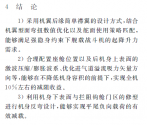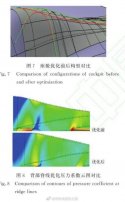You could also use 4.5 gen fighters like J16 or F15EX to carry huge batteries of AAMs for cueing by 5th gen fighters. Or loyal wingman UCAVs.No you can't just get rid of the divider. It is a structural element. If it weren't necessary, it wouldn't be there.
6 PL-15 in J-20 max and that's with folding fins. Also this is speculation since we know they have the rails and electronics for 6 MRAAMs in main bay. 6 PL-12s with folding fins or correct stacking is almost guaranteed though.
4 PL-15 in J-35 max.
New air to air missiles could be designed to increase bay capacity but those certainly would come with missile energy penalties if the rest of the tech remain more or less the same.
Here the calculations for optimal effectiveness varies with mission and with adversary. I would imagine there is absolutely a point in developing thin medium range A2A missiles so that J-20 and J-35 can increase missile capacity since each missile has the potential to splash one target so carrying more missiles simply return FAR greater utility in most missions and against most adversaries, particularly ones with low or no means of countering stealth. Therefore both the US and China probably are looking at developing various forms of future A2A weapons like the Russians already have done for some scaled down "mini" missiles.
The more missiles you can put onto a stealth fighter, the better it is. Of course while preserving stealth and some decent performance ie without overloading it with too much extra weight. Only some missions would make it vital for it to carry fewer but longer ranged missiles.
You are using an out of date browser. It may not display this or other websites correctly.
You should upgrade or use an alternative browser.
You should upgrade or use an alternative browser.
J-35 carrier fighter (PLAN) thread
- Thread starter Deino
- Start date
But why do they want to improve the aerodynamic? It may increase the top speed by some degree, but definitely not going to improve it fundamentally. So the primary goal is still to improve the fuel economy. They are definitely not doing it for saving money, so it is mainly for increasing range of the jet, which is the same objective of increasing fuel capacity.We already know from reading the Chinese papers that the hump is first and foremost an aerodynamic feature, extra room for more fuel is just (admittedly a very nice) bonus.
View attachment 79577
The paper is even bilingual
To sum up, they added the hump to increase the range, at the cost of physical rearward visibility.
Would you please NOT argue against the designers of FC-31 about what they think? It is ridiculous for a person to tell other people's mind. Here is the conclusion chapter of the research paper of the FC-31 modification.But why do they want to improve the aerodynamic? It may increase the top speed by some degree, but definitely not going to improve it fundamentally. So the primary goal is still to improve the fuel economy. They are definitely not doing it for saving money, so it is mainly for increasing range of the jet, which is the same objective of increasing fuel capacity.
To sum up, they added the hump to increase the range, at the cost of physical rearward visibility.

Translation:
- Using simple design method of flap, combined with wing curvature optimization, the design can attain lift requirement under the restraint of stealth fighter.
- By optimizing the position of the canopy and the shock wave compression/expansion flows of the aft fuselage and optimizing air inlet bleeding vector (need better translation), we can attain 10% increase of drag reduction without sacrificing total fuselage volume.
- By utilizing the curvature optimization between the under side of fuselage and the arresting hook area, we can reduce the negative lift of horizontal stabilizers.
Another point is that, by reducing at least 10% drag (more than that when all 3 are put together), the range is certainly increased by a very large margin, there is even less desire to add extra fuel tank behind the canopy. Remember adding tank is nothing simple, since fuel are constantly consumed, it's distribution changes which changes the center of mass which need to be carefully regulated throughout the flight time of the aircraft, it is no easier than any other major systems in the aircraft.
There is just too much "I see, so I think" BS by the internet "experts" such as this TYLER ROGOWAY. I wouldn't even bother to read the article when I saw that he is the author.
Last edited:
I'm not sure what you imply by "why do they want to improve the aerodynamics". For a combat aircraft, aerodynamic features that would enable it to successfully conduct it's duty should be and has always been developed to the absolute maximum potential, barring a significant negative impact to other areas of importance (ease of maintaince, internal fuel, etc).But why do they want to improve the aerodynamic? It may increase the top speed by some degree, but definitely not going to improve it fundamentally. So the primary goal is still to improve the fuel economy. They are definitely not doing it for saving money, so it is mainly for increasing range of the jet, which is the same objective of increasing fuel capacity.
To sum up, they added the hump to increase the range, at the cost of physical rearward visibility.
Also the Chinese paper in question is focused on aerodynamic optimization, and that is what the hump is considered to be in the context of this paper, any increase in volume (which is not actually a certain thing, as the paper states that they have been able to decrease drag by around 10% "without decreasing the volume") accompanied by said optimization is most likely a bonus instead of a primary objective.
p.s. according to the paper the direct affect of the hump redesign is that "the aircraft now meets the transsonic acceleration requirements", which is likely to be the main reason that pushed for a redesign in the first place.
But why do they want to improve the aerodynamic? It may increase the top speed by some degree, but definitely not going to improve it fundamentally. So the primary goal is still to improve the fuel economy. They are definitely not doing it for saving money, so it is mainly for increasing range of the jet, which is the same objective of increasing fuel capacity.
To sum up, they added the hump to increase the range, at the cost of physical rearward visibility.
to better supercruise?
it looks to me like they are trying to make the fuselage conform better to the area rule, which primarily reduces transonic drag
But the ultimate goal is not to reduce the drag. It's like I want to buy a hand drill. But what I really want to buy is not the hand drill, what I really want to buy is a hole which can be made by the drill. It is the same case here, reducing the drag isn't directly contributing to win, increasing range does. Same thing for super cruise, super cruise does dot increase the top speed, but it saves fuel at super sonic speed, thus increase range at super sonic speed.to better supercruise?
it looks to me like they are trying to make the fuselage conform better to the area rule, which primarily reduces transonic drag
But the ultimate goal is not to reduce the drag. It's like I want to buy a hand drill. But what I really want to buy is not the hand drill, what I really want to buy is a hole which can be made by the drill. It is the same case here, reducing the drag isn't directly contributing to win, increasing range does. Same thing for super cruise, super cruise does dot increase the top speed, but it saves fuel at super sonic speed, thus increase range at super sonic speed.
Drag is the air resistance force that the engine has to overcome with its thrust that will be translated to fuel consumption that will affect the range. To increase range, you either put more fuel as you suggested to an under-optimal aerodynamic design like running a wall at 100km/h, or you shape your car like a Ferrari that consumes much less fuel.

